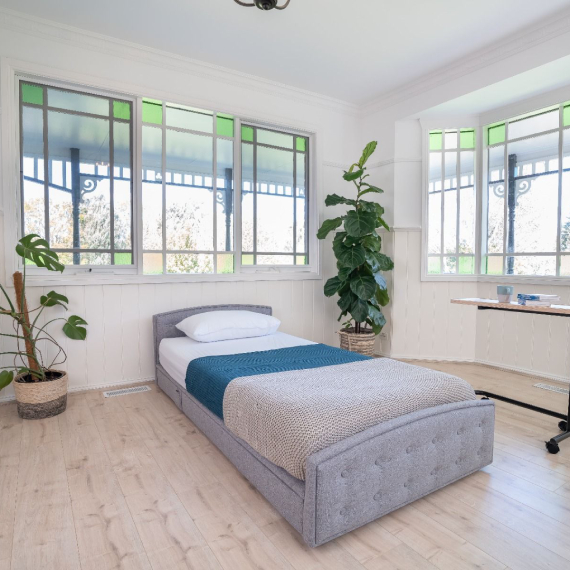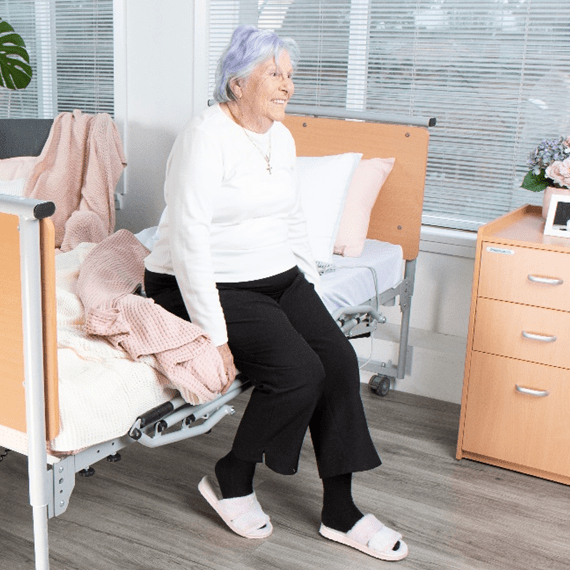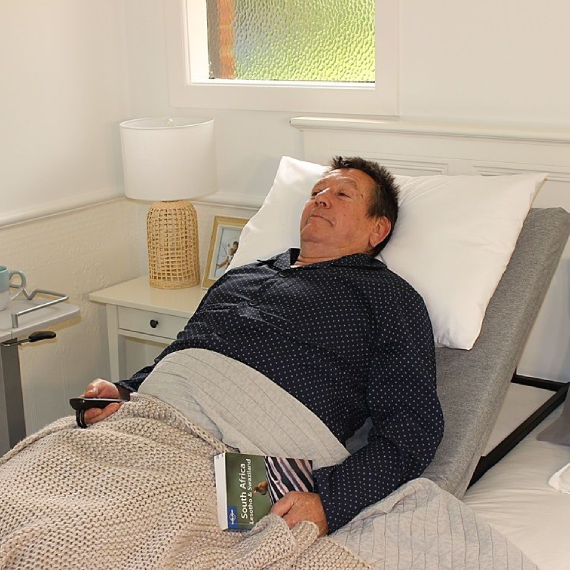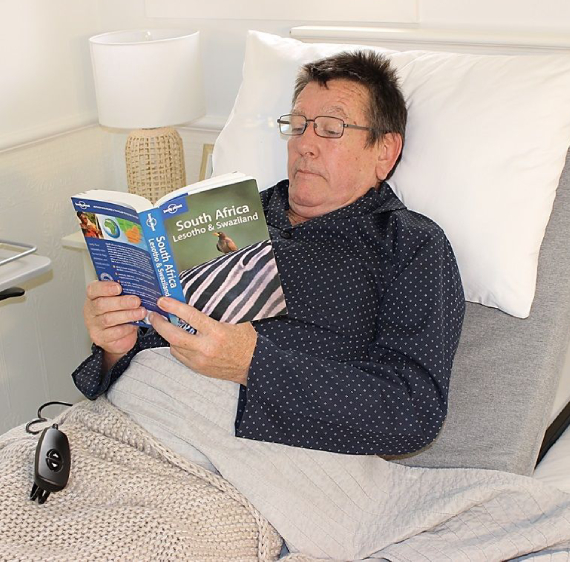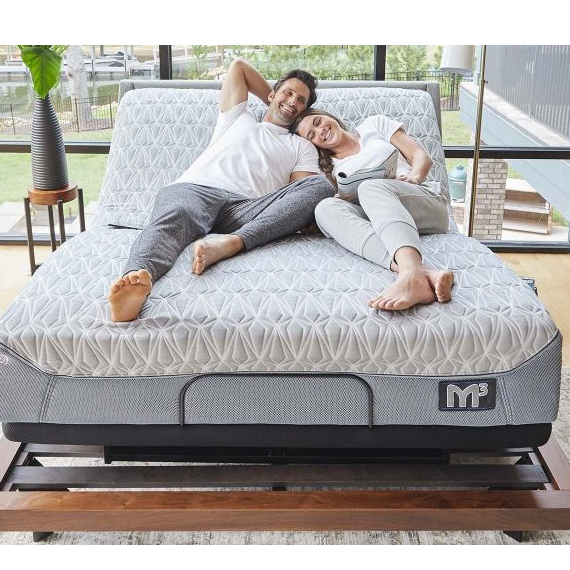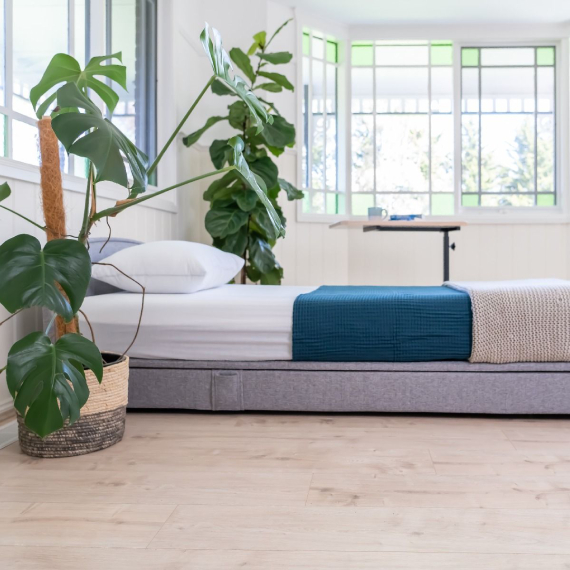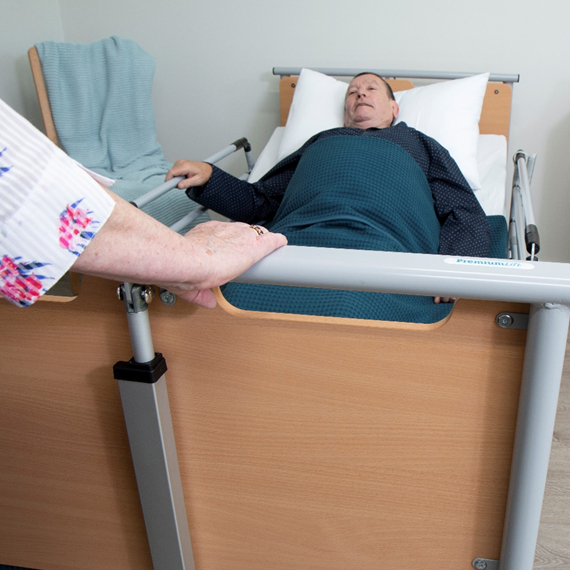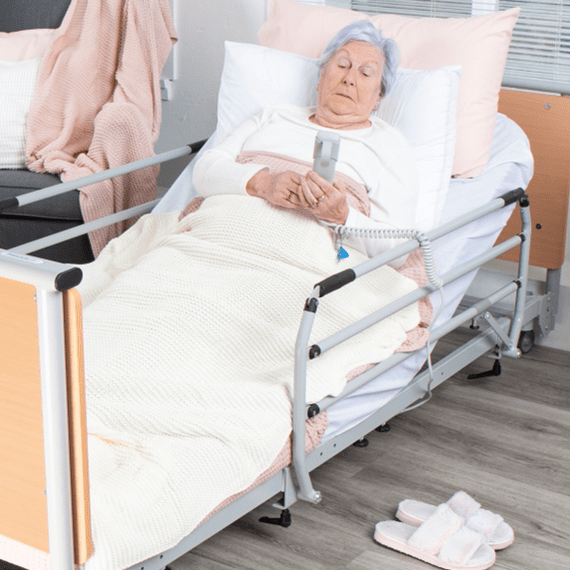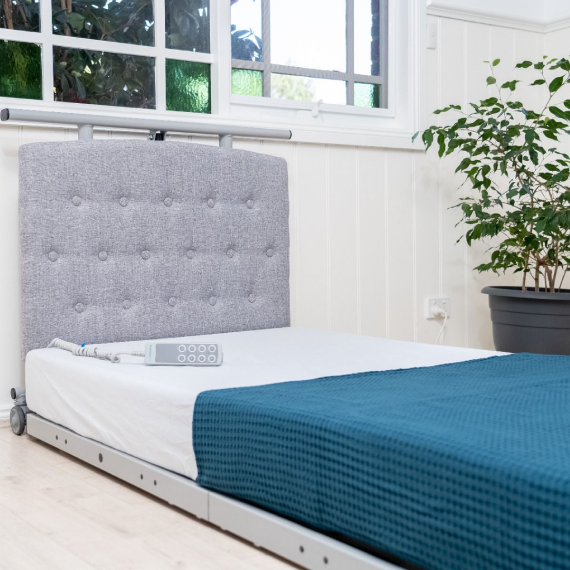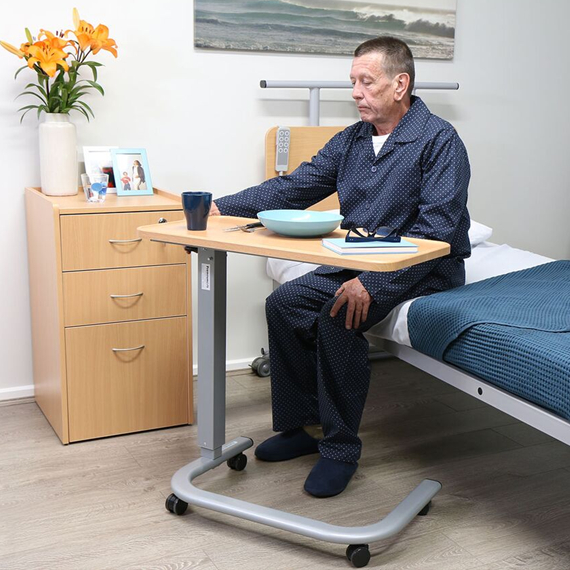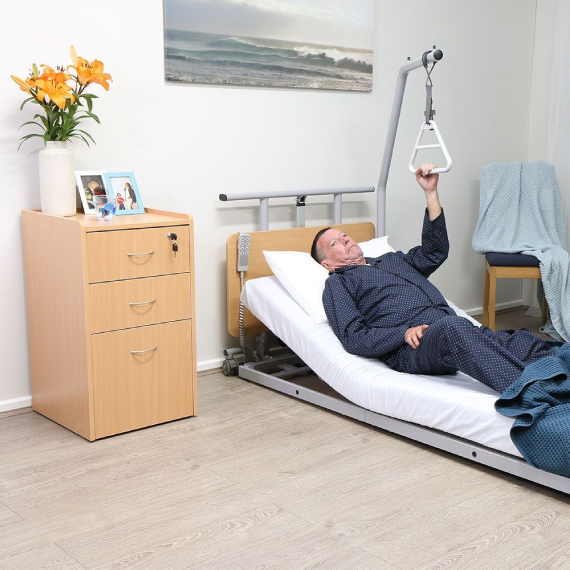Floorline & Adjustable Beds Buying Guide
Floorline beds are low-profile beds that sit closer to the ground than traditional beds, often designed without a box spring or foundation. On the other hand, Adjustable Beds are beds that can be adjusted to different angles to provide more support and comfort for the sleeper, often used by people with medical conditions. Both types of beds have their unique advantages and are available at Back Care Online, which stocks a range of floor-line beds and adjustable beds to suit your preferences and needs.
Which Type of Bed is best for me?

- - Low Profile Bed - as low as 6.7 cm from the ground
- - Elevate to a height of 10cm
- - Adjustable positions to lay in
- - Anti-Entrapment System
- - Accessories compatible with beds
- - Suitable for elderly

- - Low Profile Bed - as low as 18 cm from the ground
- - Elevate to an incredible height of 73cm
- - Adjustable positions to lay in
- - Anti-Entrapment System
- - Accessories compatible with beds
- - Suitable for elderly

- - Adjustable for a wide range of sleep positions
- - Under-bed lighting and USB ports
- - Assists with acid reflux, snoring, sleep apnea, or circulation problems
- - Place 2 bases together to function independently
- - Simple and functional, used by all ages
What is a Floorline Bed?
A floor line bed is a type of bed that is designed to sit as low as 6.7cm from the ground, which helps to reduce the risk of injury from falls for patients who are at risk of falling or have difficulty getting in and out of bed.
In addition to the lowered height, floor line beds have various other features such as an anti-entrapment system, which is designed to prevent the patient from getting trapped between the bed rails and the lowering bed frame.
Floor line beds also have the ability to adjust to different seating positions, including Trendelenburg, reverse Trendelenburg and cardiac chair positions, which can help to promote blood flow, alleviate pressure points and help patients sit upright while still providing support for their back and legs. There are compatible accessories, such as bed rails, overbed tables, support poles and other items that can help to make the patient's time more comfortable and convenient.
A floor line bed is designed to promote patient safety, comfort, and mobility, with features that help to minimise the risk of falls and promote optimal positioning for the patient.
View Now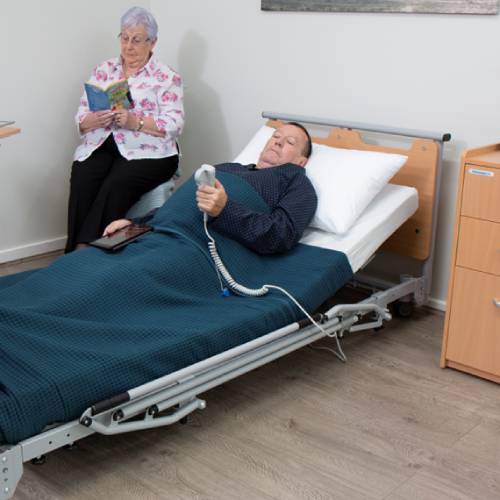
What is an Adjustable Bed?
An adjustable bed is a type of bed that can be raised or lowered at the head and foot of the bed to create different sleeping positions. They have become increasingly popular due to their ability to improve sleep quality and comfort.
Adjustable beds can offer many features and benefits to improve sleep, including the ability to improve circulation by elevating your legs and feet, which can reduce swelling and promote blood flow. They can also help alleviate pressure on your joints, making them a good option for people with arthritis or other joint pain.
The Adjustable beds Back Care Online offer come with under-bed lighting, which can be helpful for navigating in the dark and adding a subtle ambience to your bedroom. They also come with USB charging points, making it convenient to charge your phone or other devices while you're in bed.
The remote control allows you to adjust the position of the bed without having to get up. They have preset positions that can be programmed to your liking, such as anti-snoring, zero gravity, and TV-watching positions.
Overall, adjustable beds can provide a variety of benefits and features to improve sleep quality and comfort. They are often used by people with medical conditions, such as sleep apnea or acid reflux, but are also popular among those who simply want more control over their sleeping position.
View Now
AUSTRALIA'S LOWEST FLOORLINE ELECTRIC BEDS
Where can a Floorline bed be used?
Floorline beds are a type of hospital bed that can be used in a variety of settings, including hospitals, aged care facilities, and in the home. They are commonly used in hospitals after surgeries, as they can assist with patient recovery and promote optimal positioning. They are also used in aged care facilities and at home to help aid or support ongoing health concerns, such as bad circulation or swelling of the legs, by allowing patients to adjust the bed to a comfortable position. The height-adjusting function also makes it easier for carers to be able to care for patients when they are confined to their bed due to illness or mobility limitations.
View Now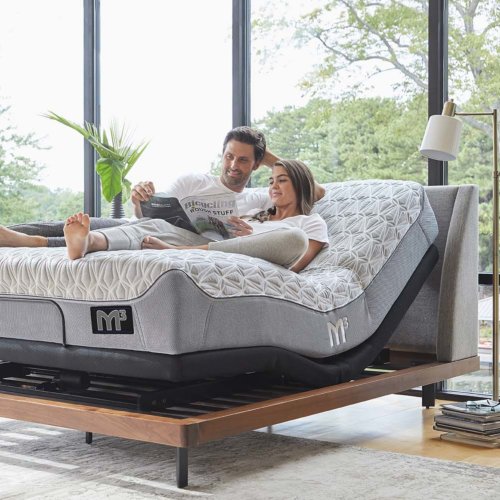
Are Floor Line beds commonly known by any other names?
Floor line beds are commonly known by different names depending on the make, model or specific features of the bed. Some of the different names for which floor line beds are known as are Aged Care Beds, Hi-Lo Beds and Mobility Beds.
"Aged Care Beds" are beds that are designed specifically for elderly patients, and include features such as adjustable height, backrest, and leg rest, as well as safety features like bed rails and alarms.
"Hi-Lo Beds" are beds that can be adjusted to different heights, including being lowered close to the floor. The term "Hi-Lo" refers to the bed's ability to be raised and lowered.
"Mobility Beds" are beds that are designed to aid patients in getting in and out of bed, and may include features such as a height-adjustable platform, side rails, and support poles.
While these terms may have different nuances and applications, they are all generally referring to a type of bed that is designed to help promote patient safety, comfort, and mobility, with features that help to minimise the risk of falls and promote optimal positioning for the patient.
View Now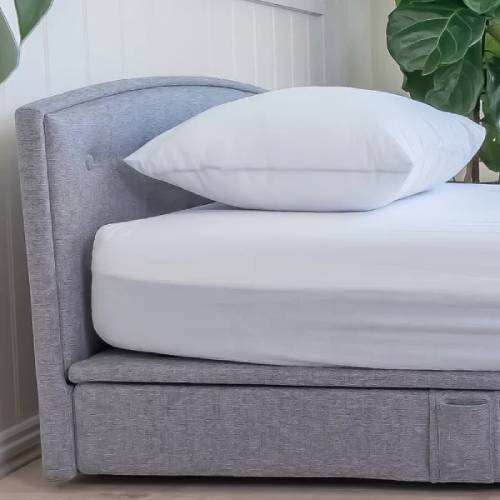
Positions to rest in:
Trendelenburg/reverse trendelenburg
The Trendelenburg position, where the bed is tilted with the feet higher than the head, is commonly used by patients with respiratory issues as it can help improve blood flow to the organs, known as perfusion. Additionally, when used in conjunction with a pressure-relieving mattress, it can be effective in maintaining skin integrity for patients who are at higher risk of developing pressure ulcers.
The Reverse Trendelenburg position can be beneficial for overweight and obese individuals during surgery, as it can relieve pressure on the head and aid in respiration. The position can hinder blood circulation which is beneficial to neck and head surgery but the patient must be constantly monitored to reduce the risk of hypotension.
Cardiac chair
The cardiac chair position is achieved by tilting the bed, allowing the patient to sit upright without causing harm or undue strain. This position provides benefits such as improved circulation, blood pressure, and healing, making it a valuable tool in patient care.
Zero Gravity
The zero gravity position is achieved by raising the head and knee line slightly above the heart and elevating the legs to about 45 degrees with knees bent, while angling the torso and thighs equally from the hip. This position supports every part of the body from head to toes, and can help ease neck and back pain, aid digestion, eliminate snoring, and regulate blood circulation, making it a popular choice for those seeking a comfortable and therapeutic sleep experience.
Head Raise/incline
Being in a head raised/inclined position in bed can be beneficial for individuals with poor circulation, sleep apnea, snoring, acid reflux, multiple sclerosis, spinal injuries, and cerebral palsy. The easiest way to achieve this function is through a floor line or adjustable bed, allowing for customizable and comfortable sleep positions.
Foot Raise/decline
Being in a feet-raised position while in bed can decrease the risk of swollen feet and legs while also soothing muscle tension by eliminating vein pressure and enhancing blood circulation throughout the body.
Low Lying
Being in a low-lying position in bed can be accommodated by a floor line bed, which can be as low as 6.7cm from the floor, avoiding the risk of serious injuries from falling from a regular bed height, and reducing the sleeper's anxiety of falling out of bed. This position can be particularly useful for those with mobility or safety concerns, providing a comfortable and secure sleep experience.
Watching TV
Ideal for sitting up and watching TV
Payment Options Available

Afterpay:
Buy now, pay in four instalments over 6 weeks with Afterpay.
Zip Pay:
Zip Pay offers flexible weekly, fortnightly, or monthly repayments with no interest charged.
